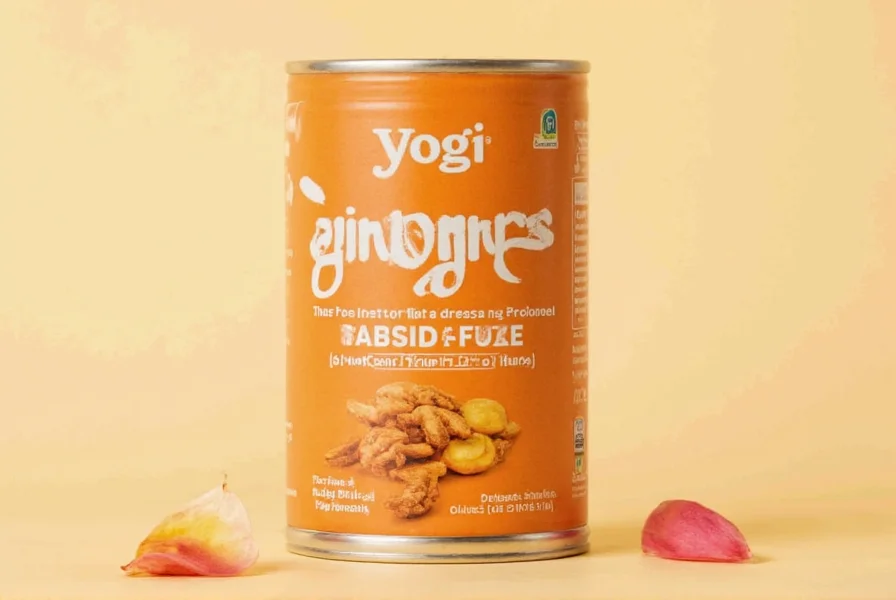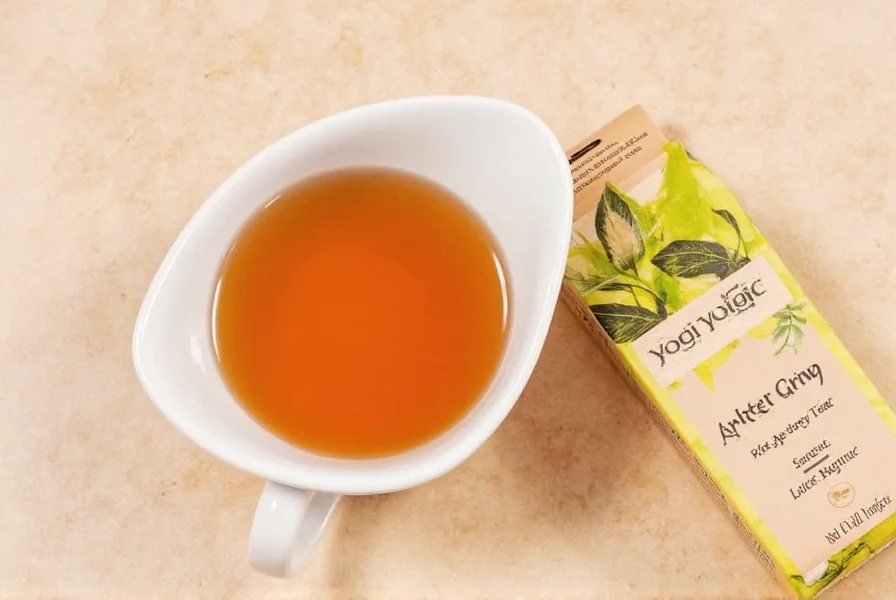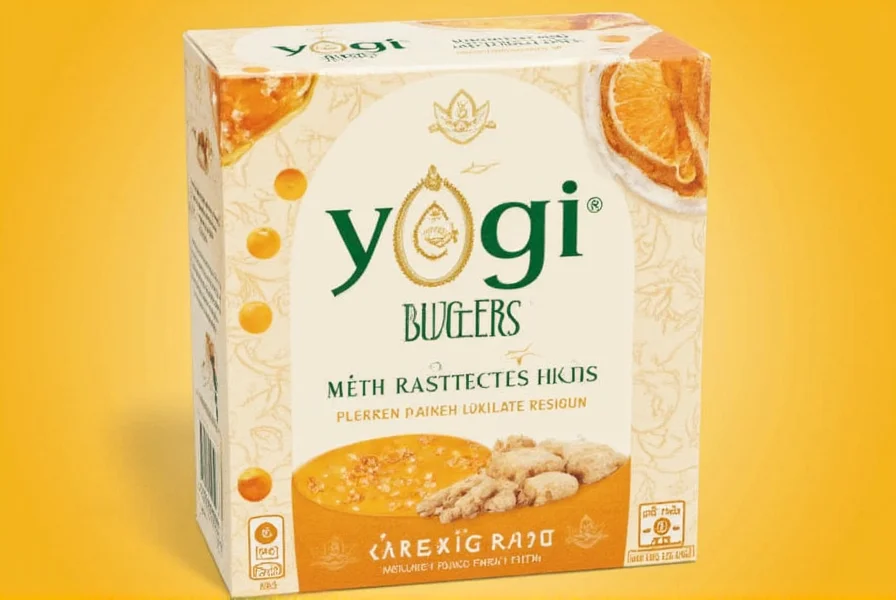When exploring what is in Yogi Ginger Tea, it's important to understand both its composition and realistic expectations. This popular herbal beverage combines organic ginger root with other traditional ingredients known for their flavor profiles and historical use in culinary traditions. The standard Yogi Ginger Tea formulation includes:
| Primary Ingredient | Percentage in Blend | Traditional Use |
|---|---|---|
| Organic Ginger Root | 58% | Digestive support, warming properties |
| Organic Licorice Root | 15% | Sweet flavor enhancement, traditional soothing properties |
| Organic Cinnamon Bark | 12% | Warming spice, flavor complexity |
| Organic Cardamom Seed | 10% | Digestive aid in traditional practices, aromatic qualities |
| Other Botanicals | 5% | Flavor balance and complexity |
The distinctive formulation of Yogi Ginger Tea creates a synergistic effect where ingredients complement each other. Ginger serves as the dominant component, providing the characteristic spicy warmth that many consumers seek when wondering does Yogi Ginger Tea help with digestion. Research published in the Journal of Gastroenterology and Hepatology indicates ginger may accelerate gastric emptying, which could explain why many people report improved comfort after consumption.

When examining yogi ginger tea benefits, it's crucial to distinguish between traditional uses and scientifically supported effects. While ginger has been used for centuries in various cultural practices, modern research provides more specific insights. A comprehensive review in the journal Nutrients analyzed multiple studies on ginger consumption and found consistent evidence that ginger may help reduce nausea, particularly in pregnancy-related morning sickness and postoperative contexts. However, the same review noted that effects vary significantly based on dosage and individual physiology.
Many consumers ask is Yogi Ginger Tea good for nausea, and the answer relates to ginger concentration. Each tea bag contains approximately 1.2 grams of the herbal blend, delivering about 700mg of ginger root per serving. This amount falls within the range (500-1500mg) that research suggests may provide digestive benefits for some individuals. It's important to note that Yogi Tea Company formulates their products as beverages, not treatments, and their packaging reflects this distinction.
When comparing yogi ginger tea vs regular ginger tea, several factors emerge. Commercial ginger teas vary significantly in ginger content, with some containing as little as 10-20% ginger root. Yogi's formulation maintains a higher ginger concentration while incorporating complementary botanicals that may enhance absorption of ginger's active compounds. The addition of black pepper extract in some Yogi formulations, for example, may increase bioavailability of certain compounds, though this varies by specific product line.
Proper preparation significantly affects how to prepare Yogi Ginger Tea properly to maximize potential benefits. For optimal extraction of ginger's bioactive compounds, experts recommend steeping the tea bag for 7-10 minutes in freshly boiled water. Longer steeping times allow more complete release of gingerols and shogaols, the primary compounds studied for their physiological effects. Adding a slice of fresh lemon may further enhance flavor and provide complementary compounds.
Understanding scientific evidence for ginger tea benefits requires examining research quality. Most studies on ginger focus on purified extracts or higher concentrations than typically found in tea. A 2020 meta-analysis in Phytotherapy Research concluded that while ginger shows promise for digestive support, the evidence from tea consumption specifically remains limited compared to studies using standardized extracts. This distinction matters when evaluating realistic expectations from regular tea consumption.
Certain populations should exercise caution with ginger products. Those taking blood-thinning medications should consult healthcare providers before regular consumption, as ginger may interact with anticoagulant therapies. Pregnant women often inquire about ginger tea safety during pregnancy, and while moderate consumption appears generally safe according to the American College of Obstetricians and Gynecologists, medical guidance is recommended for therapeutic use.

The flavor profile of Yogi Ginger Tea makes it accessible to those who might find pure ginger too intense. The inclusion of licorice and cinnamon creates a balanced taste that many find more palatable than single-ingredient ginger teas. This accessibility contributes to its popularity as a daily beverage rather than an occasional remedy.
When considering how Yogi Ginger Tea fits into wellness routines, it's valuable to view it as part of a holistic approach. No single food or beverage provides comprehensive health benefits, but incorporating traditionally used botanicals like ginger into regular dietary patterns aligns with broader nutritional principles. The tea's caffeine-free nature makes it suitable for consumption throughout the day, potentially supporting hydration while providing flavor variety.
What are the primary ingredients in Yogi Ginger Tea?
Yogi Ginger Tea primarily contains organic ginger root (58% of the blend), along with organic licorice root (15%), cinnamon bark (12%), cardamom seed (10%), and other botanicals (5%). The specific formulation creates a balanced flavor profile while maintaining a significant ginger concentration compared to many commercial ginger teas.
Can Yogi Ginger Tea help with digestive issues?
Research suggests ginger may support digestive processes, and Yogi Ginger Tea contains approximately 700mg of ginger root per serving. Studies indicate ginger may help accelerate gastric emptying and reduce nausea for some individuals. However, effects vary by person, and the tea should be viewed as part of a balanced approach to digestive wellness rather than a treatment for specific conditions.
How does Yogi Ginger Tea compare to other ginger teas?
Yogi Ginger Tea typically contains a higher percentage of ginger root (58%) compared to many commercial ginger teas, which sometimes contain as little as 10-20% ginger. The Yogi formulation also includes complementary botanicals like licorice, cinnamon, and cardamom that may enhance flavor and potentially support the absorption of ginger's active compounds, creating a more balanced profile than single-ingredient ginger teas.
Is it safe to drink Yogi Ginger Tea daily?
For most adults, consuming 1-3 cups of Yogi Ginger Tea daily is considered safe as part of a balanced diet. However, individuals taking blood-thinning medications should consult their healthcare provider first, as ginger may interact with certain medications. Those with gallstone issues or specific gastrointestinal conditions may also want to discuss regular consumption with a medical professional.
What's the best way to prepare Yogi Ginger Tea for maximum benefits?
For optimal extraction of ginger's bioactive compounds, steep the tea bag in freshly boiled water for 7-10 minutes. Longer steeping times allow more complete release of gingerols and shogaols. Using filtered water and covering the cup while steeping can enhance flavor extraction. Some people add a slice of fresh lemon, which may complement the tea's properties while enhancing flavor.
Frequently Asked Questions
What are the primary ingredients in Yogi Ginger Tea?
Yogi Ginger Tea primarily contains organic ginger root (58% of the blend), along with organic licorice root (15%), cinnamon bark (12%), cardamom seed (10%), and other botanicals (5%). The specific formulation creates a balanced flavor profile while maintaining a significant ginger concentration compared to many commercial ginger teas.
Can Yogi Ginger Tea help with digestive issues?
Research suggests ginger may support digestive processes, and Yogi Ginger Tea contains approximately 700mg of ginger root per serving. Studies indicate ginger may help accelerate gastric emptying and reduce nausea for some individuals. However, effects vary by person, and the tea should be viewed as part of a balanced approach to digestive wellness rather than a treatment for specific conditions.
How does Yogi Ginger Tea compare to other ginger teas?
Yogi Ginger Tea typically contains a higher percentage of ginger root (58%) compared to many commercial ginger teas, which sometimes contain as little as 10-20% ginger. The Yogi formulation also includes complementary botanicals like licorice, cinnamon, and cardamom that may enhance flavor and potentially support the absorption of ginger's active compounds, creating a more balanced profile than single-ingredient ginger teas.
Is it safe to drink Yogi Ginger Tea daily?
For most adults, consuming 1-3 cups of Yogi Ginger Tea daily is considered safe as part of a balanced diet. However, individuals taking blood-thinning medications should consult their healthcare provider first, as ginger may interact with certain medications. Those with gallstone issues or specific gastrointestinal conditions may also want to discuss regular consumption with a medical professional.
What's the best way to prepare Yogi Ginger Tea for maximum benefits?
For optimal extraction of ginger's bioactive compounds, steep the tea bag in freshly boiled water for 7-10 minutes. Longer steeping times allow more complete release of gingerols and shogaols. Using filtered water and covering the cup while steeping can enhance flavor extraction. Some people add a slice of fresh lemon, which may complement the tea's properties while enhancing flavor.











 浙公网安备
33010002000092号
浙公网安备
33010002000092号 浙B2-20120091-4
浙B2-20120091-4